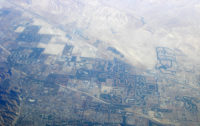In addition to the plant in Carlsbad, several brackish-water desalination plants have gone up in Texas in recent years.
Planning Challenges
Despite the change in mind-set among many water utilities, additional challenges beyond financial shortfalls exist, firms say. Many of those challenges revolve around long-term planning.
MWH's Umble contends that institutional silos can create duplication of effort and overspending. "We have planning for stormwater, planning for wastewater, planning for drinking water … and all those planning silos need to integrate into a more holistic planning situation," he says.
UCS's Christian-Smith says many utilities are too slow to incorporate realistic projections about climate change into their plans. "We are creating and building infrastructure that will last for decades," he says. "If we have a different future, we cannot depend on historical averages. We need to be building to different design specifications, and we need to be considering measurable changes in the availability of water."
Others say some communities can be more reactive than proactive. Eberts cites, as an example, Australia, where a number of drought-related projects were built on an extremely short timetable during the early to mid-2000s. Because many of the early projects were built so quickly, some of them cost more than three times as much to build as projects on a normal schedule, Eberts says. Still, many utilities have been looking at climate change for more than a decade. As droughts and severe weather of climate change persist, more and more utilities—and the public—will begin to think of water and wastewater very differently than they did just a few decades ago because there may be no other choice, says Umble.







